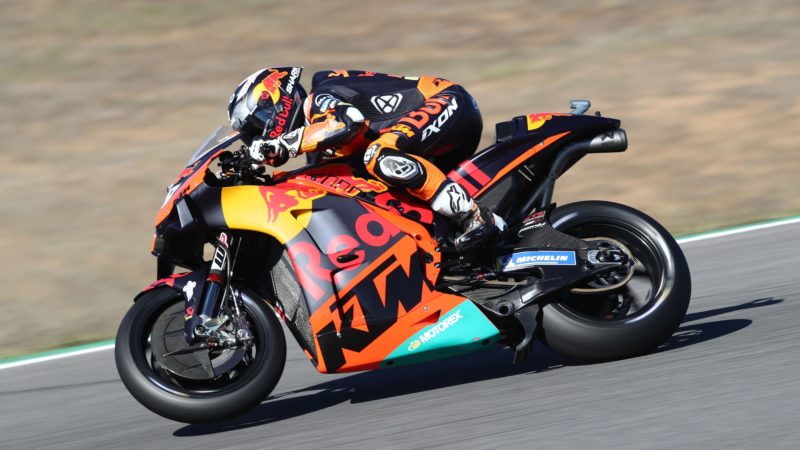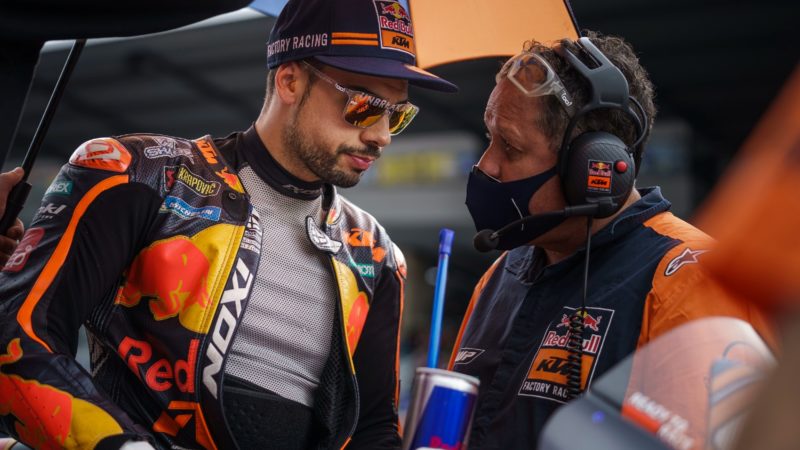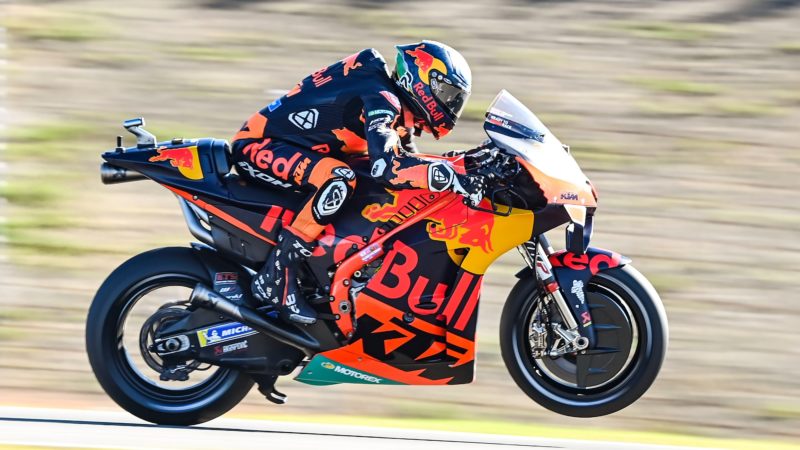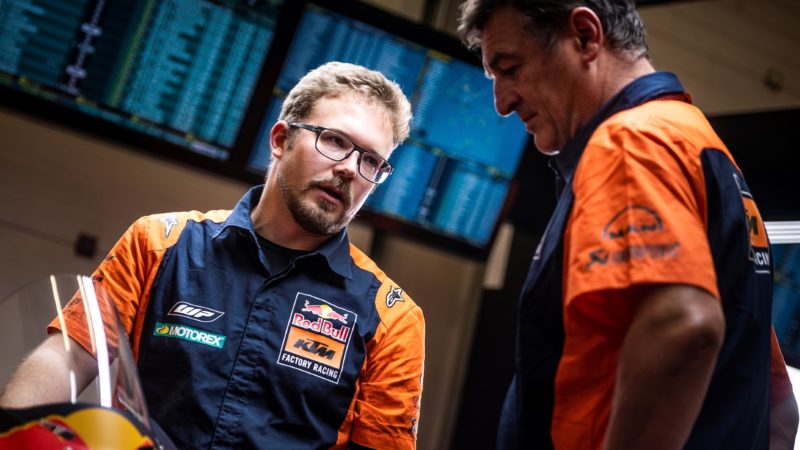Last year KTM’s four riders didn’t score a single front-row start and only achieved five second rows from 18 races, four to Oliveira and one to Binder, who is very much a Sunday man. Compare that to world champion Fabio Quartararo who scored 14 front rows and one second row from 16 races. It’s no coincidence that every time Oliveira and Binder did qualify well, they battled up front.
“To improve qualifying is one of our priorities,” says Risse. “From the engineering side it would help a lot to have a bike that’s better over one lap, because then you can form a plan of how you manage your race weekend. You can decide how much focus you want to put on a qualifying lap and how much experience you want on soft tyres, against playing it safe and keeping a spare soft rear to go from Q1 to Q2, if FP3 doesn’t work out.”
Time is so limited on Saturdays – with FP3 followed by FP4, Q1 and Q2 – that pit-lane engineers can’t do much to transform their race bikes into qualifying bikes.
“The bike is always a compromise between race pace and time attack,” continues Risse. “We want to make our bike faster for one lap, but a lot depends on the tyre allocation and the track.
When Oliveira and Binder are on track they agree that what the RC16 needs most is better corner-exit performance.
“We lose a lot of stability out of the corners,” says Oliveira, “The tyre is moving quite a lot, so there’s a lot of wasted potential to the ground.”
“We’re losing time in places where we’re at full throttle because we’re not hooking up the way we should,” adds Binder.
KTM believes this problem is triggered by what happens earlier in the corner, which can’t be solved purely through engineering.
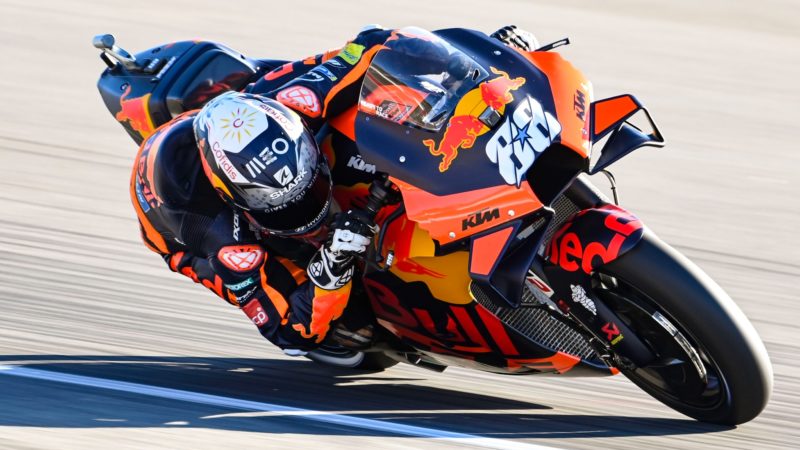
Oliveira at Portimao – note the position and angle of his throttle hand and wrist
Red Bull
“Sometimes during a time attack it helps to get the tyres into the correct temperature earlier, so the rider can attack half a lap earlier, so he can make two proper time-attack laps instead of one, which will up the pace more than what you can do in terms of producing maximum grip and stopping from the bike.
“Other times it’s about making a more radical package to squeeze more out of the tyre.
“The first real qualifying session is the last minutes of FP3 and you can’t do any big magic with the bike there because you need both bikes ready to make a normal session. You can push some buttons to do something with the electronics and you can change spring preload or ride height a bit, but not much more.
“If you make it directly through to Q2 you may think about doing something fancy but you don’t know that you’re through until the end of FP3. If you do go straight to Q2 you might change something more, like the weight distribution, or something that indirectly affects the aero, like the geometry.
“If you don’t go straight to Q2 the weekend becomes difficult because you have to spend more energy and take more risks.”
And of course it’s not only the motorcycle in qualifying either. It takes a very special and very brave rider to take the bike past its limits in Q1/Q2 to find the extra two or three tenths that make the difference between the second row and the third or fourth rows.
“Qualifying is something we must improve but part of it is also rider philosophy,” explains Risse. “Every rider has his way and you saw what Pol [Espargaró, KTM rider from 2017 to 2020] could do with our bike in qualifying [the Spaniard scored two pole positions with the RC16 in 2020] and you see what Brad produces in races.
“Of course we work with the riders on all aspects of riding and how to approach the weekend. Brad is completely of aware what he needs to do in qualifying, but every rider is different.”
Risse’s comments underline the fact that although MotoGP is more high-tech than ever it’s still the rider that makes the difference. This is one reason why MotoGP riders are under more pressure than ever, so don’t believe anyone that tells you they have an easier time thanks to technological advances.
On the other hand, Risse, Trevathan and the rest of KTM’s MotoGP engineering group are also under big pressure going into the 2022 season.

